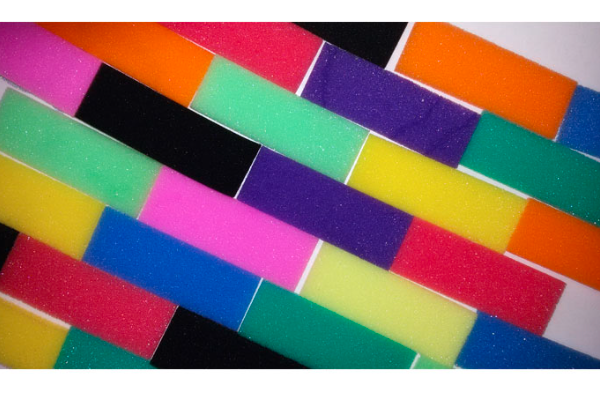In addition to using color to provide functional effects, the dyeing of polyurethane foam has the following effects: 1) Adding color paste that is consistent with the color of the furniture and paint in PU imitation wood furniture can conceal the differences in furniture during transportation and use. The "white" phenomenon caused by paint falling in the middle, thus increasing the product grade and its market competitiveness; 2) Use different colors to distinguish polyurethane soft foams with different densities and functions, and different colors and depths represent different densities, or Flame retardant sponge, or antistatic sponge; 3) "Cover up" the yellowing phenomenon of polyurethane materials, most of which are made of aromatic diisocyanate TDI, MDI and PAPI as the main raw materials. The presence of aromatic urethane groups causes yellowing of polyurethane under long-term sunlight exposure. Negative effects can be minimized by adding the appropriate shades of brown, red, yellow, and black to mask the yellowing of polyurethane articles, which is insignificant or imperceptible.
Due to the presence of highly active NCO groups in the polyurethane reaction system, it is necessary to pay attention to whether there are functional groups or compounds in the color paste that are easy to react with polyurethane raw materials and lose the coloring effect, as well as the acid and alkali resistance, oxidation resistance, and heat resistance of the color paste. , Lightfastness, colorability, water resistance, solvent resistance and price etc. It is best to select whether the color paste is suitable for the polyurethane system through experiments. The color paste should be easily dispersed in the components and can withstand the processing temperature. The impact on the material properties should be as small as possible without color shift and precipitation. The amount of color paste can be large or small, easy to adjust.
For the convenience of use and better dyeing effect, the color paste is generally pre-dispersed and dissolved in the white material.
At present, the common colorants on the market are mainly divided into two categories, namely dispersive colorants and reactive colorants:
Dispersed color paste: Dispersed color paste is the additive type color paste we usually use, which is generally made by dispersing organic or inorganic pigments in polyurethane polyol. Generally speaking, organic pigments (dye) have good dispersibility and strong tinting power. After coloring, polyurethane products are brighter in color and higher in price. Inorganic pigments have good light resistance and temperature resistance, but their colors are not as bright as organic pigments. cheap price.
Reactive color paste: it is the grafting reaction of dyes and polyether components. It can react with isocyanate in the production process of foam plastics, so the dyeing is uniform and firm, and dark-colored foam plastics can be prepared, which is beyond the reach of dispersed pigments. Since these dyes contain a certain number of hydroxyl groups, the requirements of these hydroxyl groups for isocyanates should be considered in the formulation design. But the price of this kind of reactive color paste is often several times that of disperse color paste.


